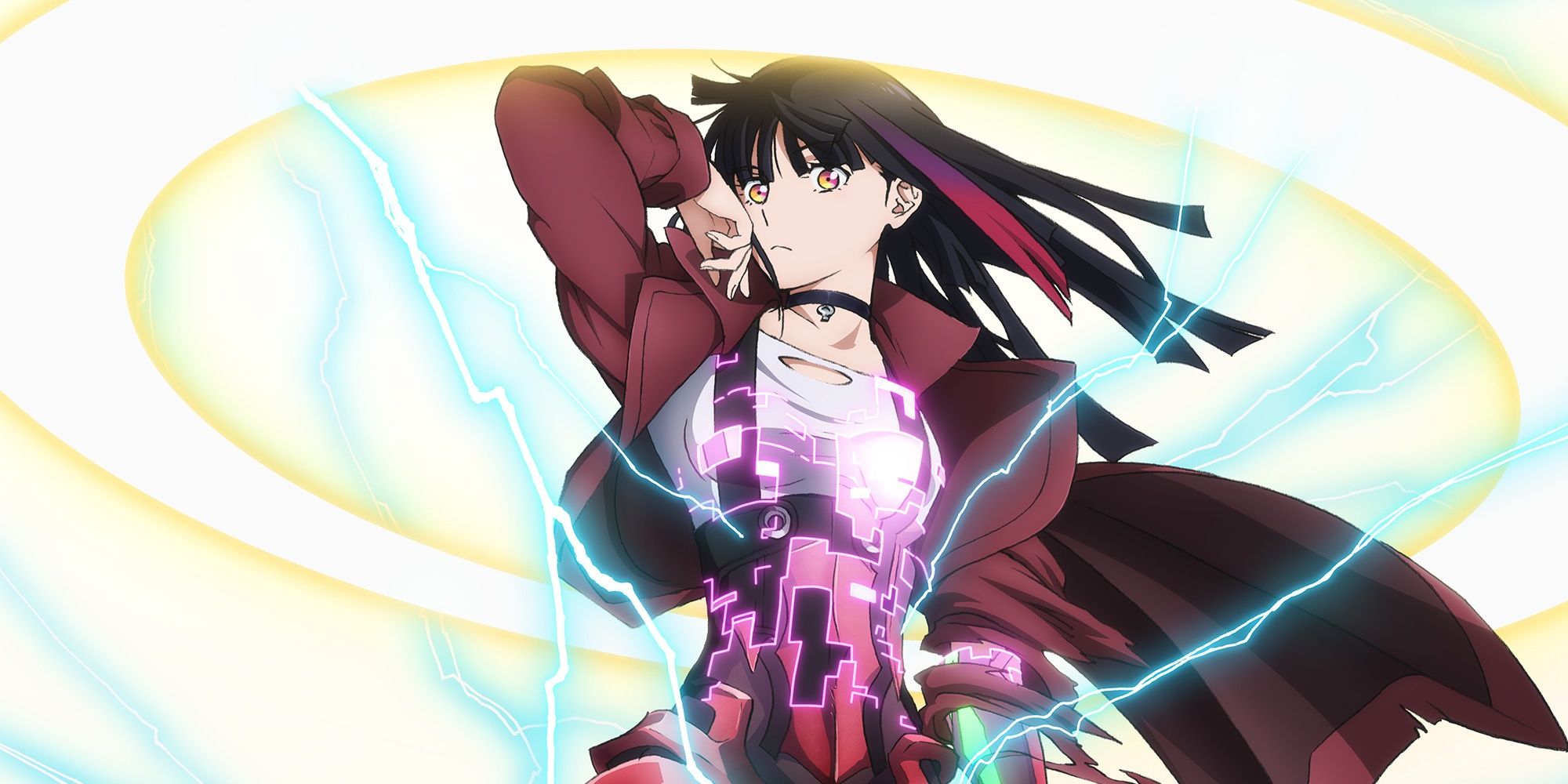Metallic Rouge is an anime that makes use of persisting science-fiction themes of co-existence between humans and androids in a futuristic society where prejudice is easy and emancipation is hard to come by. Produced by Bones, the studio behind My Hero Academia and both anime adaptations of Fullmetal Alchemist, Motonobu Hori’s latest directorial venture brings politics and mecha-battles to a vibrant cyberpunk world beset with inequalities in its very foundations. Co-created by Yutaka Izubuchi, with a screenplay from Toshizo Nemoto and music composition from Towa Tei, the series features the voices of Yume Miyamoto as Rouge Redstar, Tomoyo Kurosawa as Naomi Orthmann, Hiroyuki Yoshino as Jaron “Joker” Fate, and Yu Shimamura as Sarah Fitzgerald in the debut episode.From time immemorial, humanity filled the gaps in its understanding of the world and rationalized its own fear with the conception of God as an all-powerful being atop the known universe. The advancement of science brought a new conundrum as humankind embarked on a journey of self-discovery to satiate their hunger for knowledge and power. A century or two after Mary Shelley penned Frankenstein, which is widely regarded as the first science-fiction book, many writers reimagined modern society as a utopia of technological marvels and humanoid creations called androids. While that is no longer a distant dream, in reality, there are still seeds of dissonance in the current world. All that sci-fi stories did was point them out through the lens of artificial intelligence, androids, and more. Metallic Rouge is just the latest sci-fi story to explore this classic conflict. While it didn’t break new ground, the anime achieved what it set out to do.From the start, bigotry was Metallic Rouge’s favored weapon to expose the dark state of its world, and serve as an avenue for social commentary. Even when Neans so closely resemble humans and work among them, people treat them as second-class citizens and worse. Yet, those who look, walk, and talk exactly like Earthborns are neither second-guessed nor heckled. In one scene, the Club Canal workers steal Nectar (the Neans’ life-supporting chemical injection) from a Nean worker for their own sport, all the while bad-mouthing their robot colleague for just existing. This kind of discrimination and hate that’s based on physical appearances alone is nothing short of something that, unfortunately, happens in real life. While this scenario plays out in an over-the-top manner that’s appropriate for a sci-fi anime, it has far-reaching consequences down the road. This subplot made Mars’ ingrained societal hatred more apparent in ways that mere words couldn’t describe. The politics of robot freedom from eternal servitude is a genre-specific debate in science fiction, and Metallic Rouge further fans its flame. With Neans of both inferior and superior makes having their own personalities and goals, it’s hard not to sympathize with those who were created for the sole purpose of making humans’ workload bearable. This intolerance holds up the vices of Mars’ human populace to their faces, who like misusing and twisting the notoriously vague Asimov Code (which is based on Isaac Asimov’s “Three Laws of Robotics”) to their advantage.
Metallic Rouge is an anime that makes use of persisting science-fiction themes of co-existence between humans and androids in a futuristic society where prejudice is easy and emancipation is hard to come by. Produced by Bones, the studio behind My Hero Academia and both anime adaptations of Fullmetal Alchemist, Motonobu Hori’s latest directorial venture brings politics and mecha-battles to a vibrant cyberpunk world beset with inequalities in its very foundations. Co-created by Yutaka Izubuchi, with a screenplay from Toshizo Nemoto and music composition from Towa Tei, the series features the voices of Yume Miyamoto as Rouge Redstar, Tomoyo Kurosawa as Naomi Orthmann, Hiroyuki Yoshino as Jaron “Joker” Fate, and Yu Shimamura as Sarah Fitzgerald in the debut episode.
From time immemorial, humanity filled the gaps in its understanding of the world and rationalized its own fear with the conception of God as an all-powerful being atop the known universe. The advancement of science brought a new conundrum as humankind embarked on a journey of self-discovery to satiate their hunger for knowledge and power. A century or two after Mary Shelley penned Frankenstein, which is widely regarded as the first science-fiction book, many writers reimagined modern society as a utopia of technological marvels and humanoid creations called androids. While that is no longer a distant dream, in reality, there are still seeds of dissonance in the current world. All that sci-fi stories did was point them out through the lens of artificial intelligence, androids, and more. Metallic Rouge is just the latest sci-fi story to explore this classic conflict. While it didn’t break new ground, the anime achieved what it set out to do.
From the start, bigotry was Metallic Rouge‘s favored weapon to expose the dark state of its world, and serve as an avenue for social commentary. Even when Neans so closely resemble humans and work among them, people treat them as second-class citizens and worse. Yet, those who look, walk, and talk exactly like Earthborns are neither second-guessed nor heckled. In one scene, the Club Canal workers steal Nectar (the Neans’ life-supporting chemical injection) from a Nean worker for their own sport, all the while bad-mouthing their robot colleague for just existing. This kind of discrimination and hate that’s based on physical appearances alone is nothing short of something that, unfortunately, happens in real life. While this scenario plays out in an over-the-top manner that’s appropriate for a sci-fi anime, it has far-reaching consequences down the road. This subplot made Mars’ ingrained societal hatred more apparent in ways that mere words couldn’t describe. The politics of robot freedom from eternal servitude is a genre-specific debate in science fiction, and Metallic Rouge further fans its flame. With Neans of both inferior and superior makes having their own personalities and goals, it’s hard not to sympathize with those who were created for the sole purpose of making humans’ workload bearable. This intolerance holds up the vices of Mars’ human populace to their faces, who like misusing and twisting the notoriously vague Asimov Code (which is based on Isaac Asimov’s “Three Laws of Robotics”) to their advantage.
#REVIEW #Metallic #Rouge #Celebrates #Original #Animes #Legacy
Note:- (Not all news on the site expresses the point of view of the site, but we transmit this news automatically and translate it through programmatic technology on the site and not from a human editor. The content is auto-generated from a syndicated feed.))



